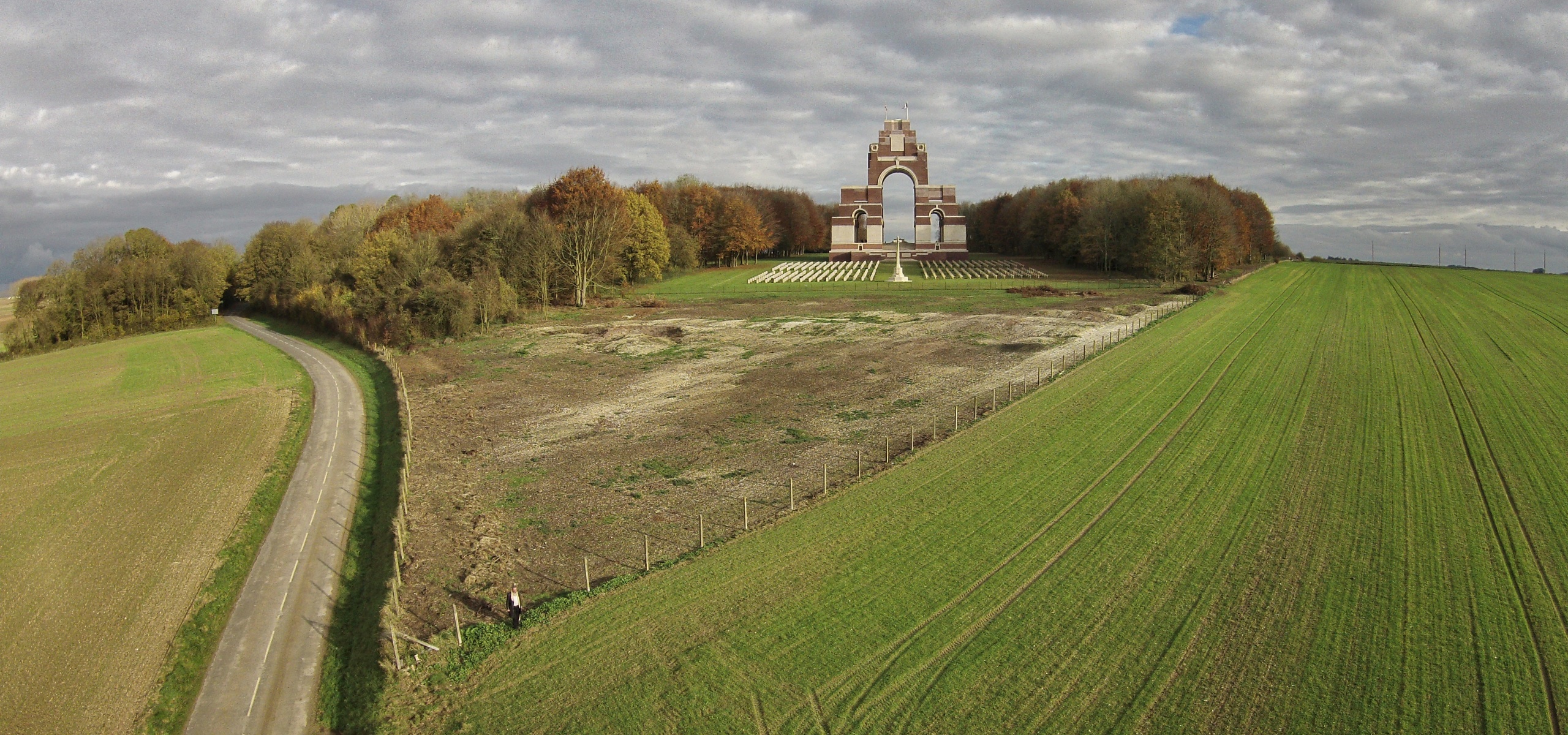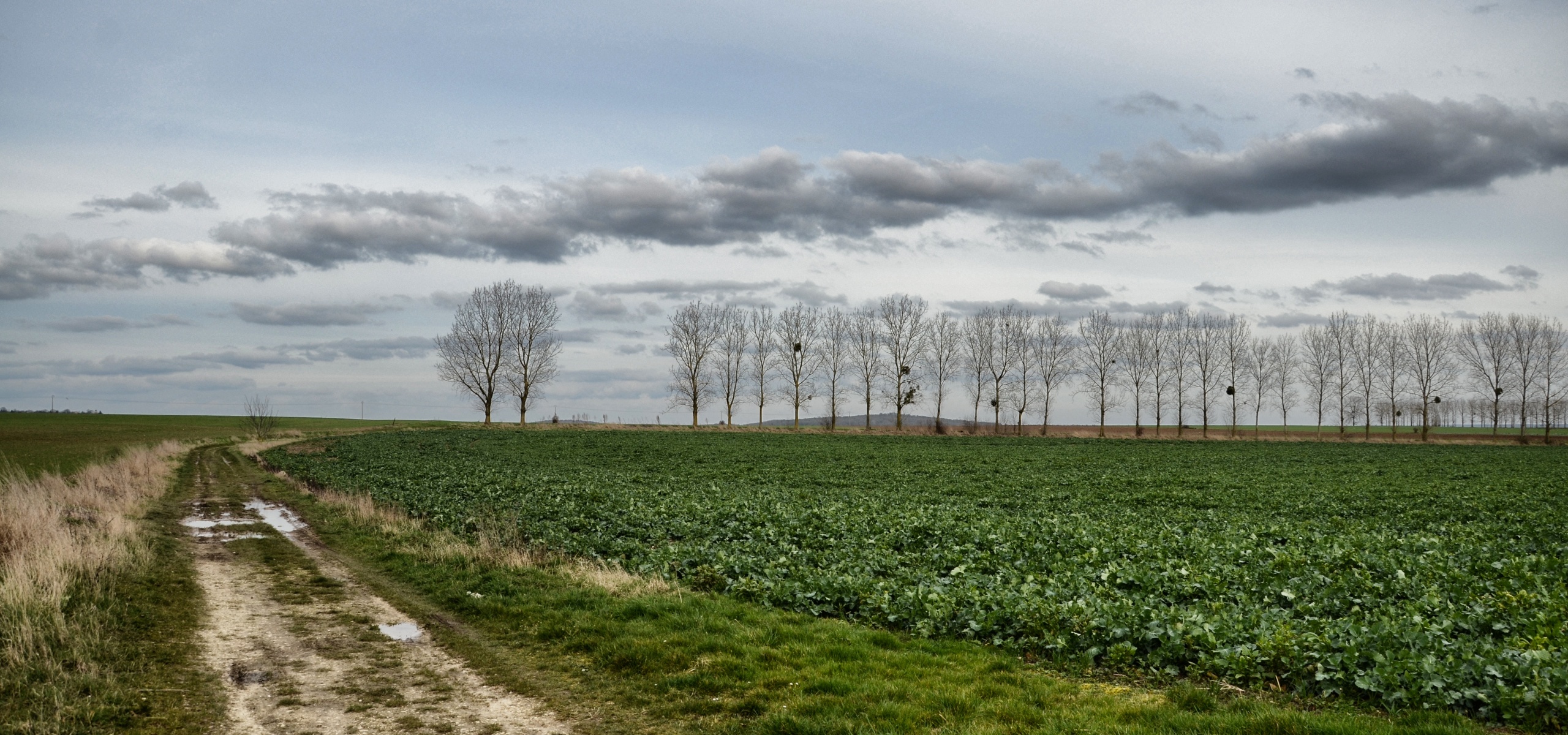WW1 Revisited
A Great War Journey with Paul Reed

Archives

The Indian Corps Memorial at Neuve-Chapelle is located at the heart of India’s sacrificial ground on the Western Front. The nearby village of Neuve-Chapelle saw some of the earliest fighting involving Indian troops in October 1914 and was the scene of the Indian Corps attacks in March and September of 1915. The memorial was unveiled in October 1927 and aside from many Indian veterans who were present, Rudyard Kipling – the author… Read More

On this 98th Anniversary of the end of the Battle of the Somme, this image of the Thiepval Memorial was taken with the Phantom Drone being used for the Above The Battlefield project. Good friend and author Mary Freeman, author of Poets & Pals of Picardy, coined the phrase ‘Mighty Thiepval’ which sums up what the memorial is about very well indeed – it can be seen all over the Somme battlefields… Read More

This week marks the centenary of the start of the First Battle of Ypres when the men of the British Expeditionary Force (BEF) defended the ground around Ypres for the first time in what would become almost four years of constant fighting in this area. The magnificent Black Watch Memorial at the site of Black Watch Corner near Polygon Wood overlooks the battlefield where a century ago the Old Contemptibles fought their… Read More

In a small side road on the edge of fields in Northern France is a small shelter with a British clock face on the roof bearing the name of a company in Derby. On close inspection within lies the grave of Lieutenant Anthony George Attwood Morris. The youngest son of a family from Rugby, Morris had been educated at Winchester and had been commissioned in the regular army before the war, serving… Read More

A century ago the fighting in the fields of the Marne close to Paris was in full swing. Nearly two and a half million British, French and German soldiers, with Colonial troops from the far flung corners of the French Empire, were locked in combat in what would be one of the most decisive battles of 1914 and arguably of the whole war. Historian Dan Snow has just released this excellent video… Read More

A century ago today during the early stages of the Battle of the Marne, French author and poet Charles Péguy was killed in action. Péguy was no youngster; he was 41 when he went to war with the 19th Company of the 276th Regiment of Infantry in the French Army with the rank of Lieutenant. Going into action in the fields seen above he was shot in the head and killed instantly, one… Read More

Bois de Delville, Delville Wood – or Devil’s Wood to the troops – was a large area of woodland attached to a chateau alongside the village of Longueval. This village was taken by the 9th (Scottish) Division on 14th July 1916 and the South African Brigade of that formation marched into the wood 3,500 strong; after six days of fighting as the wood was held, just 750 South Africans walked out. It… Read More

On this day in 2009 Great War veteran Harry Patch died aged an incredible 111 years. Often referred to as the ‘Last Fighting Tommy’, Harry Patch had served in Flanders with the Duke of Cornwall’s Light Infantry during the Third Battle of Ypres in 1917. He was the last surviving British soldier to have served in the trenches of the Western Front when he died and his face and voice have come to… Read More

By the close of the Great War France had lost nearly 1.4 million dead and just as in Britain across the country every village, town and city was keen to erect a war memorial to those who had died for France. The memorials vary greatly from lists in a frame on the wall of a church to impressive statues of French Poilu defying the enemy, or a fallen soldier draped in the… Read More

Today is the 97th Anniversary of the Battle of Arras, in some respects one of the forgotten battles of the Great War. Despite the huge amount of publications on Ypres and the Somme, in recent years only Jon Nicholl’s Cheerful Sacrifice, Peter Barton’s & Jeremy Banning’s Arras 1917 and my own Walking Arras have been published on this short but bloody battle. I blogged about this for the University of Oxford WW1 Centenary site last year… Read More

Les Crapouillots was a satirical magazine during the Great War and also the name given to the Trench Mortar branch of the French Army by the Poilus in the trenches. This memorial in the village of Laffaux in the battlefields between Soissons and the Chemin des Dames commemorates 12,000 men of the unit who died on the Western Front. Constructed in the 1930s it was badly damaged in May 1940 during the… Read More

The Voie Sacrée, or the ‘Sacred Way’, was a road running from Bar le Duc, a major railhead behind the front, and the forward battle zone at Verdun. In 1916 it was realised that the defence of Verdun by the French Army rested on its ability to resupply the front with men, ammunition, food and equipment. The road ran for 72km and operated night and day with thousands of men and vehicles moving up… Read More

There are a large number of German First World War cemeteries in the Vosges area of the Western Front, many of them containing original features or even contemporary headstones. The cemetery at Illfurth, located on a hillside amongst the woods above the town, was a cemetery started by the Germans when this ground was part of Germany in 1914. At that time the men buried here would have been interred on what… Read More

Newfoundland was the smallest colony in the British Empire to raise it’s own regiment in the Great War, the Newfoundland Regiment. It served at Gallipoli in 1915 and then on the Western Front from 1916 onwards. It’s memorials take the form of a bronze Caribou, a native animal of Newfoundland, which overlooks the site of the action it commemorates. There are five such memorials located on the Western Front and this Caribou… Read More

This huge memorial, the largest free-standing statue in France, is set in 40 acres of ground. Designed by architect Thomas Hastings, the sculptor was Frederick MacMonnies. It was unveiled in September 1932, some 14 years after the First Battle of the Marne in September 1914. Paid for by the American Friends of France, it was in recognition of this important turning point in the First World War and the stopping of the… Read More
Comments on WW1 Revisited